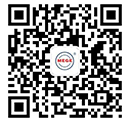SKF keeping electric and fuel vehicles moving – smoothly
09 Oct,2019

The changing face of the automotive industry is having a significant impact on how transmission bearings are being designed and used, says SKF’s Sylvain Bussit and Daniel Jansen.
Global governmental policy and regulation, coupled with increased customer demand, have enabled the market for electrified vehicles (EVs) to boom – according to Deloitte it is predicted that they will account for 10% of all cars sold by 2024. However, passenger vehicles with internal combustion engines (ICE) will still remain on the market for many years to come.
This places OEMs in something of an awkward position. They must bring the bulk of their research and development (R&D) efforts to bear on devising new architectures for EVs and hybrids. At the same time, they must continue to squeeze every ounce of efficiency from their ICE and transmissions in order to meet increasingly stringent global regulations on fuel efficiency and carbon dioxide (CO2) emissions.
These developments have significant implications for the use of bearings in the powertrain of both ICE and EV vehicles. It is essential, therefore, that bearing manufacturers understand the technical issues being faced by OEMs and Tier 1 suppliers in order to develop tailored solutions that make their lives easier.
Regardless of the powertrain architecture, friction is the great enemy. Power loss due to friction is increasing the CO2 emissions of traditional and hybrid powertrains and can reduce the mileage achievable from a single charge in battery electric vehicles (BEV). In response, OEMs are increasingly using lower-friction solutions rather than the standard design of tapered roller bearings (TRBs) in their gearboxes, reducer gears and differentials.
We at SKF are working to develop low-friction TRBs that, in specific applications, have been shown to reduce power losses by up to 50% in comparison with conventional TRBs. Key to their success is the 'toolbox' approach that allows SKF to create tailored products for any application. Once the needs of an application have been identified using advanced simulation technology, our engineers can amend parameters such as contact angle, number and dimensions of rolling elements as well as the design of the cage to create a highly friction-optimised TRB.
In order for EVs to work efficiently, the motors that drive them must run at very high speeds, which places enormous strain on the bearings they employ. We are developing designs for bearings - and their associated polymer cages and lubricants - that ensure they can withstand the higher speeds, acceleration and temperatures generated by these motors.
The evolution of the automotive powertrain is not just changing performance requirements for bearings, it is also changing the nature of the fluids used to lubricate them. In powertrains, OEMs are developing oils with lower viscosity and special additives in order to reduce power losses.
What is under investigation is the impact of these new lubricants on bearings. Some, for instance, may not sufficiently prevent wear or surface fatigue between bearing raceways and rolling elements.
One solution could be the carbonitriding treatment on bearing components. Certainly, we are using the technology to increase the service lifetime of bearings exposed to contaminated environment and poor lubricants.
These are just a few of the challenges faced by OEMs. We are working with partners across the sector to develop innovative solutions to these problems and improve performance, efficiency and reliability.












